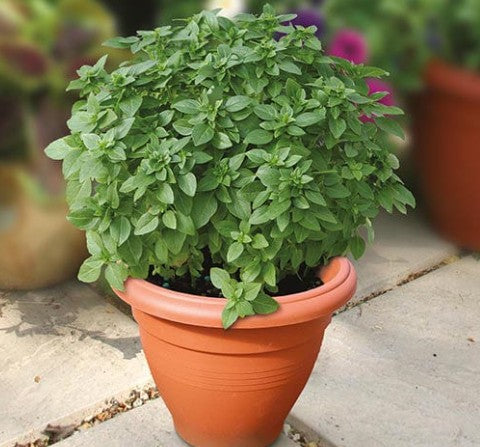The role of mulch in winter gardening
Mulch plays a central role in winter gardening, providing a number of benefits that help protect plants, improve soil quality, and contribute to garden health. Some of the benefits of using mulch include:
Temperature regulation
Mulch acts a bit like an insulating blanket, helping regulate soil temperature by keeping it warmer during freezing temperatures. This prevents the soil from experiencing extreme fluctuations that could damage plant roots. By covering the ground with mulch, frost takes longer to penetrate the soil. This extended protection is crucial for overwintering plants or bulbs that might be sensitive to early frost.
Moisture retention
Winter winds can dry out the soil, but a layer of mulch helps retain moisture by reducing evaporation. Mulch also prevents water run-off, helping to hold soil in place. Winter rains or melting snow can wash away unprotected soil, but mulch minimises this, ensuring your garden’s structure stays intact.
Protection for plants
Mulching around perennials, shrubs, and trees can help protect their root systems and increase their chances of survival through the winter.
Soil improvement
Mulch breaks down over the winter, adding valuable organic matter to the soil. This improves soil structure, fertility, and drainage, helping plants to grow better in the spring. Mulching with organic materials allows nutrients to be slowly released into the soil as the mulch decomposes, enriching the soil ready for the season ahead.
Pest Control
Some types of mulch can help deter pests and rodents that might damage plants during winter. It can also prevent pests from reaching the roots or lower parts of dormant plants, reducing the risk of winter damage from feeding.
Aesthetics
Even in winter, a mulched garden looks neat and well-maintained, as it hides bare soil and adds a uniform look to the garden. It can also provide a protective, non-slip surface during icy or snowy conditions.
Applying mulch to shield plants from temperature fluctuations
It’s usually best to apply mulch after the first hard frost, once the ground is already cold, which also helps prevent pests from using it as shelter. A layer of mulch a few inches thick is generally enough for winter protection. Too thick a layer can suffocate the soil and plant roots. In spring, it can be useful to remove or reduce mulch to prevent excess moisture from being trapped in the soil, which could encourage rot or fungal diseases.
Preventing weed growth with winter mulch
Winter mulch can also help prevent weeds in your garden during the colder months. Although weed growth typically slows down in winter, some hardy weeds can still sprout and compete with dormant plants for nutrients. Mulching not only protects your soil and plants but also creates a barrier that prevents weeds from germinating and growing.
Dos and Donts for mulching for winter
Let’s break down some quick dos and donts when mulching in the winter.
Do:
- Apply mulch after the first frost – trapping cold air in the soil, keeping plants dormant and protected from temperature swings.
- Use a 2-4 inch layer of mulch – to insulate and suppress weeds without suffocating plants.
- Use organic mulch for added soil benefits – to enrich the soil over time.
- Leave a gap around plant stems and tree trunks – keep mulch about 2-3 inches away from stems and trunks to prevent rot and pest issues.
- Remove or thin mulch in early spring – as temperatures rise, thin out the mulch to avoid trapping excess moisture around plants.
- Pull up any visible weeds before mulching – starting with a weed-free surface maximizes the weed-suppressing benefits of mulch.
- Use mulch to protect perennials, bulbs, and shrubs – protecting these plants from frost damage.
- Add extra mulch, especially in cold climates. Consider increasing mulch thickness for better insulation.
Don’t:
- Apply mulch too early – it can keep the soil too warm, encouraging plant growth when they should be going dormant.
- Pile mulch directly against plants – touching plant stems or tree trunks can trap moisture and invite pests, leading to rot.
- Use a mulch layer thicker than 4 inches – excessive mulch can suffocate roots and cause poor drainage or fungal problems.
- Use non-composted manure or fresh grass clippings – these can generate heat as they decompose, harming plants, or introducing weed seeds into your garden.
- Forget to water before mulching – mulch locks in moisture, so water your plants or beds first to keep the soil hydrated throughout winter.
- Let mulch get compacted over winter – check your mulch during winter to ensure it’s not compacting and suffocating plants.

















